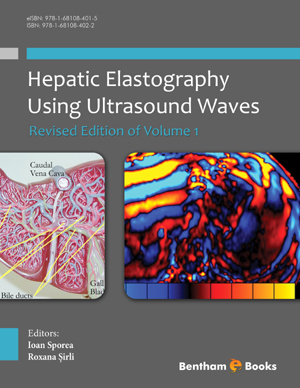Abstract
VTQ (ARFI) elastography is a new method developed in the last 5-6 years for the non-invasive evaluation of liver fibrosis, integrated into a Siemens Acuson ultrasound system. Ten valid measurements are performed in the right liver lobe, a median value is calculated and the result is expressed in meters/second. The AUROC’s range between 0.75-0.85 for predicting significant fibrosis and for predicting cirrhosis between 0.85-0.95. To increase the accuracy of liver cirrhosis diagnosis, the spleen stiffness (SS) assessed by VTQ (ARFI) can be used. VTQ (ARFI) it is a reproducible method (intraclass correlation coefficient ranging from 0.81-0.87), especially in patients with severe fibrosis and cirrhosis. Similar with Transient Elastography (TE), elevated levels of aminotransferases are associated with the increase of liver stiffness (LS) values assessed by VTQ (ARFI). Even if the manufacturer did not recommend the use of technical parameters IQR (interquartile range interval) and SR (success rate) well-known from TE, published data proved that the accuracy of the method significantly increased with the use of these quality parameters. Regarding the prediction of liver cirrhosis complications, especially portal-hypertension, data regarding the usefulness of LS and/or SS are not so solid, but VTQ (ARFI) accuracy can be increased by combining different parameters.
ElastPQ is a newly developed point Shear Waves elastographic method. Only few data, but with promising results, were published until now regarding this technique.
Keywords: ARFI elastography, Chronic hepatitis, ElastPQ, Liver cirrhosis, Liver stiffness, Portal hypertension, VTQ.






















